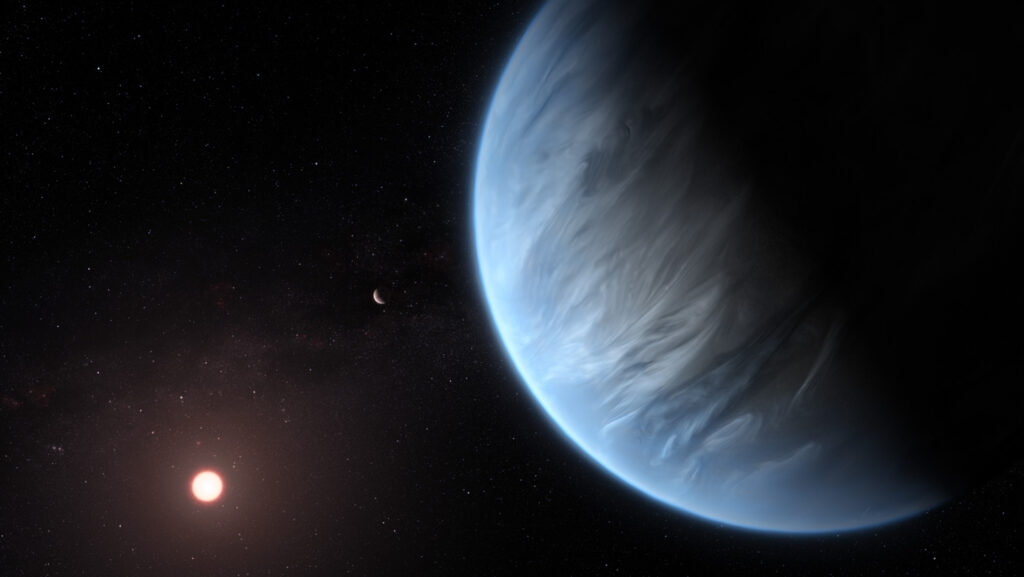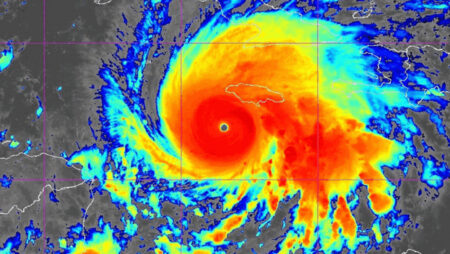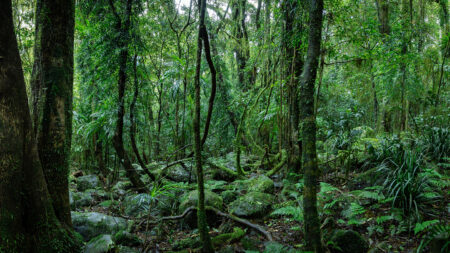Some planets might produce their own water instead of relying on outside sources.
In laboratory experiments, researchers simulated extreme conditions found within certain exoplanets by blasting olivine — a mineral abundant in planetary interiors — with high-energy lasers in the presence of hydrogen gas. Hydrogen strips the minerals of their oxygen atoms, which then react with the hydrogen to form water, the team reports October 29 in Nature.
The discovery offers a viable explanation for water-rich exoplanets orbiting close to their host stars, the researcher say. The process might even account for the origin of some of Earth’s water, adding a new piece to a longstanding mystery.
Hundreds of exoplanets with sizes and masses between Earth and Neptune have been discovered, many of which orbit far closer to their stars than Earth orbits the sun. Their estimated densities suggest they possess rocky interiors covered by a thick layer of water or hydrogen.
However, it’s unclear how these planets could be so water-rich. In the solar system, there´s a clear divide between planets formed on either side of the “snow line.” Inside that line, water is scarce, vaporized by the sun. Venus is an example. Planets formed outside the snow line, like Saturn and Neptune, are rich in water and gas.
Astrophysicists had thought that watery exoplanets must form far from their star and then move inward. The new study suggests that under the right conditions chemical reactions between hydrogen and minerals can produce water locally.
Re-creating those conditions in the lab has been challenging. To achieve the required temperature and pressure, researchers place samples in a tiny container called a diamond anvil cell. But heated hydrogen molecules can get into the diamond’s carbon-atom lattice, causing it to shatter.
By using pulsed lasers instead of a continuous beam — heating the sample for a fraction of a second at a time — researchers reduced the hydrogen infiltration. “I still broke a lot of diamonds,” says Harrison Horn, a planetary scientist now at the Lawrence Livermore National Laboratory in California.
When the experiment finally worked, the scientists were shocked by the amount of water produced. “There was no rock left. All I had was metal and water,” Horn says. Geophysicist Dan Shim of Arizona State University in Tempe adds, “We are talking about a lot of water, like thousands of times more water than expected for the Earth if you have a thick layer of hydrogen atmosphere.” In the experiments, about 18 percent of the initial mass was turned into water.
The researchers think this water-generating process can occur at the boundary between the planet’s rocky interior and its gaseous hydrogen envelope, where high pressures and temperatures can drive the reaction. The final water content of these planets could range from about 5 percent to 28 percent of the planet’s mass, they estimate.
The resulting worlds would be either massive ocean worlds, two to five times the size of Earth and covered by a deep liquid ocean, or “hycean” worlds, harboring an ocean topped with a thick hydrogen layer.
The findings suggest that these worlds are endpoints on a continuum rather than distinct types. “They are related, like cousins, or like parents and sons and daughters, basically,” Shim says. Whether a planet ends up as an ocean world or a hycean one probably depends on factors such as the planet’s proximity to its star, its size and starting composition, the researchers say.
The study contributes to the debate over the habitability of hycean worlds. While recent studies suggest that most of their water may be trapped in the mantle, leaving the surface dry, the new study “moves the water abundance back up,” says Remo Burn, an astrophysicist at the Observatoire de la Côte d’Azur in Nice, France, who was not involved in the new work. “It’s maybe good news for life on those planets.”
These results also have implications for Earth. While the high-pressure, high-temperature conditions necessary for this reaction don’t exist in today’s Earth, they might have during its formation. An early Earth with a thick, hydrogen-rich atmosphere could have driven similar water-forming reactions.
This hypothesis is supported by evidence from tiny water vesicles trapped in ancient, deep-earth diamonds, which Horn notes have a distinct chemical signature compared with surface water. This suggests there may be two different reservoirs for Earth’s water: a primitive one acquired through early chemical reactions and a later component partly delivered by water-rich comets and asteroids from the outer solar system.
Read the full article here













